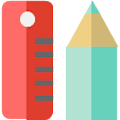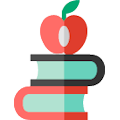
Hello!
My name is Steve Reifman, and I am a National Board Certified elementary school teacher, author, and speaker in Santa Monica, CA.
SteveReifman.com is a resource for elementary school teachers and parents. My mission is to teach the whole child—empowering students to succeed academically, build strong character, learn valuable work habits and social skills, and take charge of their health and wellness.
By far, this has been the website’s busiest week since it debuted in August of 2010. So, I thought I would use this week’s blog post as an opportunity to welcome all the new visitors stevereifman.com has been receiving recently and share some of the exciting things that have been happening.
This week I conclude my “Learning How to Learn†video series by presenting “Champ’s Big Week,†a story of how one student practices over the course of several days to prepare for his Friday math facts quiz. In the video Champ demonstrates how kids can use a variety of brain-friendly study strategies to learn academic content. The video also shows how parents can support their kids in this effort. It is recommended that parents and teachers share this video with children to empower them with useful strategies and help them become more independent learners.
Three Brand New "Learning How to Learn" Strategies:
This week I share three short videos that feature the final three independent learning strategies from the “Learning How to Learn†Workshop I presented to parents and students last fall. “Looking for a Pattern,†“Making Learning Implicit,†and “Using Metacognition & Reflection†round out my list of learning strategies that, taken together, offer children a variety of ways to learn and remember academic content. About two-thirds of my students attended the hour-long, after-school workshop, and I followed up with the families of the remaining children at a later time. Though I try to create rich, authentic, contextual learning experiences for my students on a daily basis, there are still times when they need to learn how to study and remember discrete pieces of information independently, especially as they progress through the upper elementary grades and into middle school and high school.
A Brand New "Learning How to Learn" Strategy:
This week my video series features the use of visuals, the ninth independent learning strategy I shared during the “Learning How to Learn†Workshop I presented to parents and students last fall. (I’m skipping the eighth strategy, Pegging, in this video series because I don’t believe it has as much utility for elementary students as the other strategies I’m sharing.) Using a variety of colors, pictures, and images can produce excellent learning results. In the video I share specific strategies to help students spell more effectively and better understand paragraph structure. About two-thirds of my students attended the hour-long, after-school workshop, and I followed up with the families of the remaining children at a later time. Though I try to create rich, authentic, contextual learning experiences for my students on a daily basis, there are still times when they need to learn how to study and remember discrete pieces of information independently, especially as they progress through the upper elementary grades and into middle school and high school.












